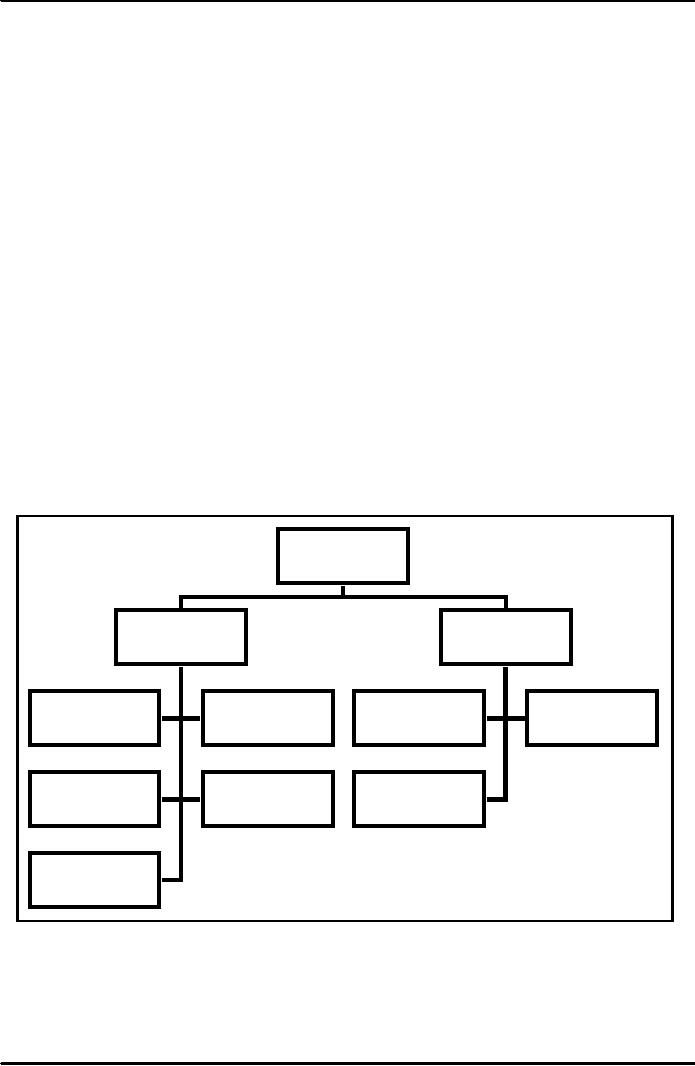 |

Introduction
To Public
AdministrationMGT111
VU
LESSON
20
PLANNING
COMMISSION AND PLANNING
DEVELOPMENT
At the
end of the lecture the students
will be able to
understand:
-
The
function and role of Planning
organizations at the national level and
provincial level
The
Need for Planning
As
we know at the time of independence
Pakistan had inadequate
social and physical
infrastructure,
and
there was need to develop
roads, industry, schools,
dams, power houses, hospitals
and other
government
structure.
In
1948 Development Board was
created in Economic Affairs Division.
The Board was to plan the
socio-economic
development of the new country. The Board
in 1950 prepared a Six- Year
Development
Plan.
In
1953 the Government created Planning
Board with a purpose to `develop the
resources of the
country
as rapidly as possible to promote the
welfare of people, provide
adequate living standards,
social
welfare
services, and secure social
justice and equality of opportunities to
all.'
In
1958 the Planning Board was re-designated
as Planning Commission. The objectives of
the
Commission
were more or less the
same as the board, but in addition it
was to consult the
Central,
Provincial
and relevant agencies to prepare
national plans, make
assessment of human and
material
resources.
The Planning Commission was the
highest body for making
national plans.
Organization
Chart Planning Commission & Planning
Development Division
Figure
1
Deputy
Chairman
Secretary
Chief
Economist
Member
Production
Additional
Secretary
Member
Social
Jr.
Chief
&
Management
Projects
Wing
Sector
Economist
(Macro)
Member
Sr.
Chief
JCE
(Operation)
Infrastructure
Agri.
& Food
Jr.
Secretary
Admin
Figure
1 gives the organization chart of Planning
Commission as it exist in 2003.
The Planning
Commission
is the highest planning body
and it is head by Deputy
Chairman
Functions
Following
are the major functions of Planning
Commission:
1.
To
prepare comprehensive national
plan for socio-economic development of
the country
73

Introduction
To Public
AdministrationMGT111
VU
2.
To
formulate within the framework of
national plan, of annual plan
and annual development
programme
projects and programmes of
national development.
3.
Monitoring
the implementation of all major development
projects and programmes
(which
are
above Rs. 40 million)
4.
Continuous
evaluation of economic situation and
coordination of economic
policies
5.
Examination
and technical appraisal of
development projects received from
Federal
Ministries
and Provincial Government
for consideration of Central development
working
Party
(CDWP)/ Executive Committee of National Economic
Council (ECNEC)
Relationship
of Plan and Projects
There
is a complementary relationship between plan
and projects. Projects are
to plan what bricks
are
to building.
What
does national plan
comprise?
A
national plan comprise number of
small projects
What
is a project? A Project is work undertaken to
achieve goals in a given time period. It
has
following
characteristics:
1.
Investment
of resources: all projects require
resources like capital,
machinery & equipments.
2.
It
consumes inputs and gives outputs: when
the projects start producing. These
consume
inputs
like raw material etc., to
produce output
3.
It has beginning and an end:
A project is started and it
gets completed after which it
starts
producing
output or service Examples: of
project is Terbala Dam Project,
School
construction
Project, Highway Project
(N-5).
Process
of Project Completion
A
project follows a sequential
process of "beginning" and ending
which is as follows:
1.
Projects Identification
2.
Project study (feasibility)
3.
Project Preparation
4.
Project Appraisal
5.
Project Approval
6.
Project Implementation and
Monitoring
7.
Project Evaluation
1.
Project
Identification: A project is identified
by the representatives of the people,
experts in the
field,
survey, media, etc. Project
identification means that
there is a need felt by community
to
have
a project. For example the community may
have the need for an X clean
drinking water or,
need
to have proper sewerage
system. The community may
then approach government to
provide
clean drinking water by constructing a
water reservoir.
2.
Project
Feasibility: It is in depth study of
technical, financial and economic
viability of project. It
is
based on surveys and
research studies. The
technical, financial and economic
study would see if
the
project will be able to
cover its cost and
remain in demand or
not.
3.
Project
Preparation: The details of the project
study are put in a form
called PC-I. It is a form
of
Planning
Commission. The forms requires
such information as sponsoring
organization, time of
completion,
if the project is included in plan, cost of the
project, location of the project,
history,
source
of financing, inputs, etc.
4.
Project
appraisal: It is careful checking of the
basic data collected through
survey, assumptions
and
methodology used in project preparation.
It is in fact review of the project data
and
information.
The appraisal is undertaken by the
concerned technical section of
Planning
Commission.
5.
Project
approval: After appraisal the project
goes to the approving body.
Following are the
project
approving bodies:
National
Economic Council (NEC)
a.
b.
Executive
Committee of NEC
Economic
Coordination
74

Introduction
To Public
AdministrationMGT111
VU
Committee
of Cabinet
c.
Central Development Working Party:
Approves all provincial
schemes costing up to Rs.
100
million
d.
Departmental Developing Working
Party
e.
Provincial Development Working
Party: each Province has a
Provincial Development
Working
Party. The Provincial Development
Working Party scrutinise
various projects for
inclusion
in the Annual and Five Year
Plans.
6.
Project
Implementation: The project
becomes part of annual
programme and receives
allocation
annually
from the budget, after which it is
implemented and completed.
7.
Project
Evaluation: When the project is
completed it is then evaluated
i.e., it is assessed the
problems
faced during implementation, whether the
project is meeting the need
for which it was
completed
etc.
Provincial
Planning Organization
At
the provincial level there is Planning
and Development Department. The P&D
is headed by the
Chairman
P&D. The Secretary P&D is the administrative
head. The Chairman is
assisted by a Chief
Economist
and Members and Joint
Chief Economist.
Members
are assisted by Chief of
Section. Each Chief of
Section deals with one or
more sectors of
the
provincial economy i.e., agriculture,
forestry, tourism, livestock, irrigation,
industry, water supply,
social
welfare,
population planning education
etc. The Chief of Section is
either engineer, economist or
generalist
Functions
The
functions of P & D are as
follows:
1.
To prepare Annual Development
Programme in coordination with
other departments
2.
To prepare Five Year and
other development plans
3.
To clear Schemes to be sent to
ECNEC/CDWP
4.
To coordinate External Capital
Assistance
Approval
Authority
The
Planning Department is the Secretariat for PDWP
and a clearing house of
development
projects
by different line departments.
The PDWP ca approve projects ranging from
Rs. 100 million to
Rs.
1000
million
Conclusions
Planning
organizations have evolved in Pakistan
and are performing functions
for the overall
development
of the country. The process of
planning is systematic and
rational because there
are
institutions
and processes of
planning.
Concepts
Project:
it
is a distinct activity which
requires investment and
has
beginning
and end.
Project
cycle:
project
cycle is a sequential process of
project identification,
feasibility,
preparation, appraisal, approval, implementation
&
evaluation.
75
Table of Contents:
- INTRODUCTION:Institutions of State, Individualism
- EVOLUTION OF PUBLIC ADMINISTRATION:Classical School, The Shovelling Experiment
- CLASSICAL SCHOOL OF THOUGHTS – I:Theory of Bureaucracy, Human Relation Approach
- CLASSICAL SCHOOL OF THOUGHTS – II:Contributors of This Approach
- HUMAN RELATIONS SCHOOLS:Behavioural School, System Schools
- POWER AND POLITICS:Conflict- as Positive and Negative, Reactions of Managers, Three Dimensional Typology
- HISTORY OF PUBLIC ADMINISTRATION – I:Moghul Period, British Period
- HISTORY OF PUBLIC ADMINISTRATION – II
- CIVIL SERVICE:What are the Functions Performed by the Government?
- CIVIL SERVICE REFORMS:Implementation of the Reforms, Categories of the Civil Service
- 1973 CONSTITUTION OF PAKISTAN:The Republic of Pakistan, Definition of the State
- STRUCTURE OF GOVERNMENT:Rules of Business, Conclusion
- PUBLIC AND PRIVATE ADMINISTRATION:The Public Interest, Ambiguity, Less Efficient
- ORGANIZATION:Formal Organizations, Departmentalization
- DEPARTMENTALIZATION:Departmentalization by Enterprise Function, Departments by Product
- POWER AND AUTHORITY:Nature of Relationship, Delegation of Functional Authority
- DELEGATION OF AUTHORITY:The Art of Delegation, Coordination
- PLANNING – I:Four Major Aspects of Planning, Types of Plans
- PLANNING – II:Planning ProcessThree principles of plans
- PLANNING COMMISSION AND PLANNING DEVELOPMENT:Functions, Approval Authority
- DECISION MAKING:Theories on Decision Making, Steps in Rational Decision Making
- HUMAN RESOURCE MANAGEMENT (HRM):Importance of Human Resource, Recruitment
- SELECTION PROCESS AND TRAINING:Levels at Which Selection takes Place, Training and Development
- PERFORMANCE APPRAISAL:Formal Appraisals, Informal Appraisals
- SELECTION AND TRAINING AND PUBLIC ORGANIZATIONS:Performance Evaluation,
- PUBLIC FINANCE:Background, Components of Public Finance, Dissimilarities
- BUDGET:Components of Public Income, Use of Taxes, Types of Taxation
- PUBLIC BUDGET:Incremental Budget, Annual Budget Statement, Budget Preparation
- NATIONAL FINANCE COMMISSION:Fiscal Federalism Defined, Multiple Criteria
- ADMINISTRATIVE CONTROL:Types of Accountability, Internal Control, External Control
- AUDIT:Economy, Effectiveness, Objectives of Performance Audit, Concepts
- MOTIVATION:Assumptions about Motivation, Early ViewsThree Needs
- MOTIVATION AND LEADERSHIP:Reinforcement Theory, Leadership, The Trait Approach
- LEADERSHIP:Contingency Approaches, Personal Characteristics of Employees
- TEAM – I:Formal & Informal teams, Functions of Informal Groups, Characteristics of Teams
- TEAM – II:Team Cohesiveness, Four ways to Cohesiveness, Communication
- COMMUNICATION – I:Types of Communication, How to Improve Communication
- COMMUNICATION – II:Factors in Organizational Communication, Negotiating To Manage Conflicts
- DISTRICT ADMINISTRATION:The British Period, After Independence, The Issues
- DEVOLUTION PLAN – I:Country Information, Tiers or Level of Government
- DEVOLUTION PLAN – II:Aim of Devolution Plan, Administrative Reforms, Separation of powers
- POLITICAL REFORMS:District, Tehsil, Functions of Union Council, Fiscal Reforms
- NEW PUBLIC MANAGEMENT (NPM):Strategy, Beginning of Management Approach
- MANAGERIAL PROGRAMME AGENDA – I
- MANAGERIAL PROGRAMME AGENDA – II:Theoretical Bases of Management, Critique on Management